 |
 |
 |
We've spent some time in the western part of the country on our way to IJmuiden, where our boat was shipped to the Mediterranean. Holland is very quaint, in its architecture and in its pace of life.
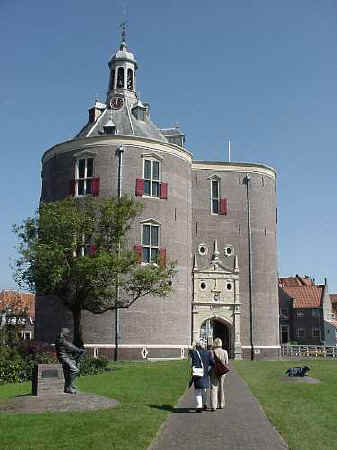 |
These are the front and back views of the South Gate, or Drommedaris in Enkhuizen, built in 1540 and heightened in 1648. The building was once used as a prison and now houses a dormitory and is used occasionally for special functions. It's a good example of the medieval towers used by Dutch towns as part of their defenses to protect their perimeters. |
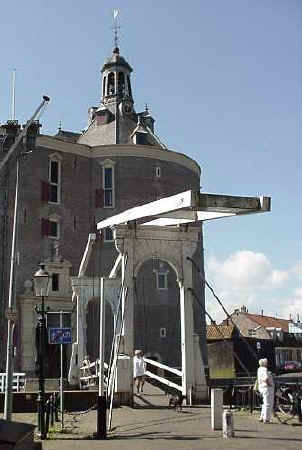 |
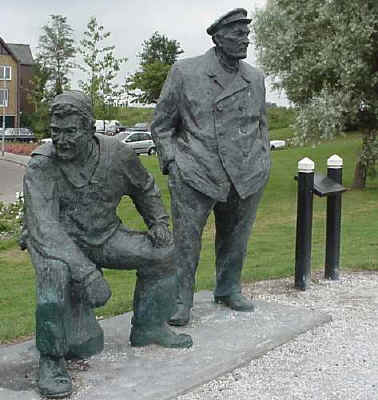
|
We have found that many of the statues we've seen celebrate the common man, such as the statue at left of fishermen in Medemblik. Below, Art has a rather one-way conversation with the ship-boys from Bontekoe in Hoorn. |
 |
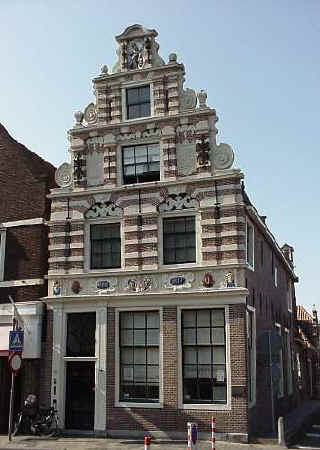
|
This residence in Enkhuizen is typical of the buildings we see. Many of the old houses have inlaid tiles, often with images of boats or coats-of-arms. The top is often ornately designed with sculptures that tell a story. |
|
This is the commercial version of the stepped-gable building. This 1613 building is the old town hall in Hoorn, and was once a monastery. |
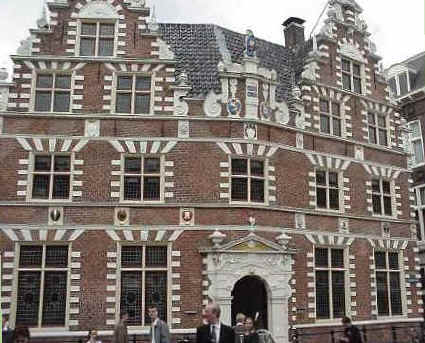 |
|